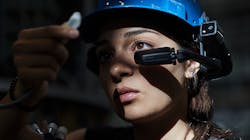The COVID-19 pandemic has changed virtually everything about our business and personal lives this year, and automation is certainly no exception to that rule. To better understand how COVID-19 is affecting industrial companies and their decisions around automation, we connected with Dan Malyszko of Malikso Engineering, a system integration firm focused on delivering automation systems to manufacturers of all sizes—from small local companies to global operations—for a recent episode of the “Automation World Gets Your Questions Answered” podcast series.
As automation projects slowly begin to ramp back up, Malyszko said he’s seeing more planning for 2021. Specifically, he’s seeing clients not just looking to what’s next, but “what's after next?” People are increasingly talking about things they weren't talking about before. And a lot of those have to do with things like remote monitoring,” he said.
Remote access
Technologies associated with remote access and monitoring have, of course, been of interest to a number of manufacturers for years now, and we’ve reported on it often, such as in this feature article: IIoT Enables Next-Level Remote Asset Monitoring. What’s changed is the fact that COVID-19 has seemingly lit a fire under manufacturers who were hesitant to deploy this technology or who didn’t think it was necessary for them to make a move toward remote access tech yet.
We're hearing from all of our customers about how automation can help address the ways COVID-19 is affecting production, said Malyszko, especially around the use of remote connectivity. Cybersecurity issues remain at the top of manufacturer concerns about this technology, despite the added pressures of COVID-19. In most cases, cybersecurity concerns have kept many manufacturers from deploying remote access up to this point.
Malyszko said the uptick in remote access interest from so many manufacturers has allowed Malisko Engineering to flex its OT (operations technology) expertise when talking to the IT (information technology) departments about bringing remote connectivity and other collaboration technologies down to the plant floor.
“What we’ve found is that this is one of those areas—securing endpoints and securing data—that IT is really, really good at, and they've been doing it for years,” said Malyszko. “So if there’s one benefit from all this that we've seen is that this [pandemic] is facilitating new digital conversations. Everybody talks about having a digital roadmap or a digital strategy, and this notion of remotely connecting to the plant floor is now driving that conversation.”
Social distancingAccording to Malyszko, these factors are now driving a lot of conversations about plant Wi-Fi. Up to now, we've seen Wi-Fi be “kind of hit and miss in plants,” he said, but interest in all of these “new remote technologies is driving new conversations about putting in more Wi-Fi on the plant floor. And we see that opening up a lot more doors to other, more advanced technologies down the road, once we get past this [pandemic]. With this move toward more Wi-Fi, the notion of people walking around with iPads and going paperless, that starts to become more of a reality.”
IT/OT alignmentMalyszko said he hopes this heightened interest in remote connection technologies continues to drive a bigger portion of the industry toward greater levels of digital transformation. “I hope that it's a longer-term response to getting IT departments and corporate more involved [in plant technologies]. Once we prove what can be done with remote connectivity to keep people connected, what about connecting all those assets and really start looking at Industrial Internet of Things. Once we have all this connectivity in place, manufacturers and processors will more easily be able to see that we can do other things, like grabbing data from all of the plants and aggregating it so that they can have better KPIs (key performance indicators).”
Sponsored Recommendations
Leaders relevant to this article:




